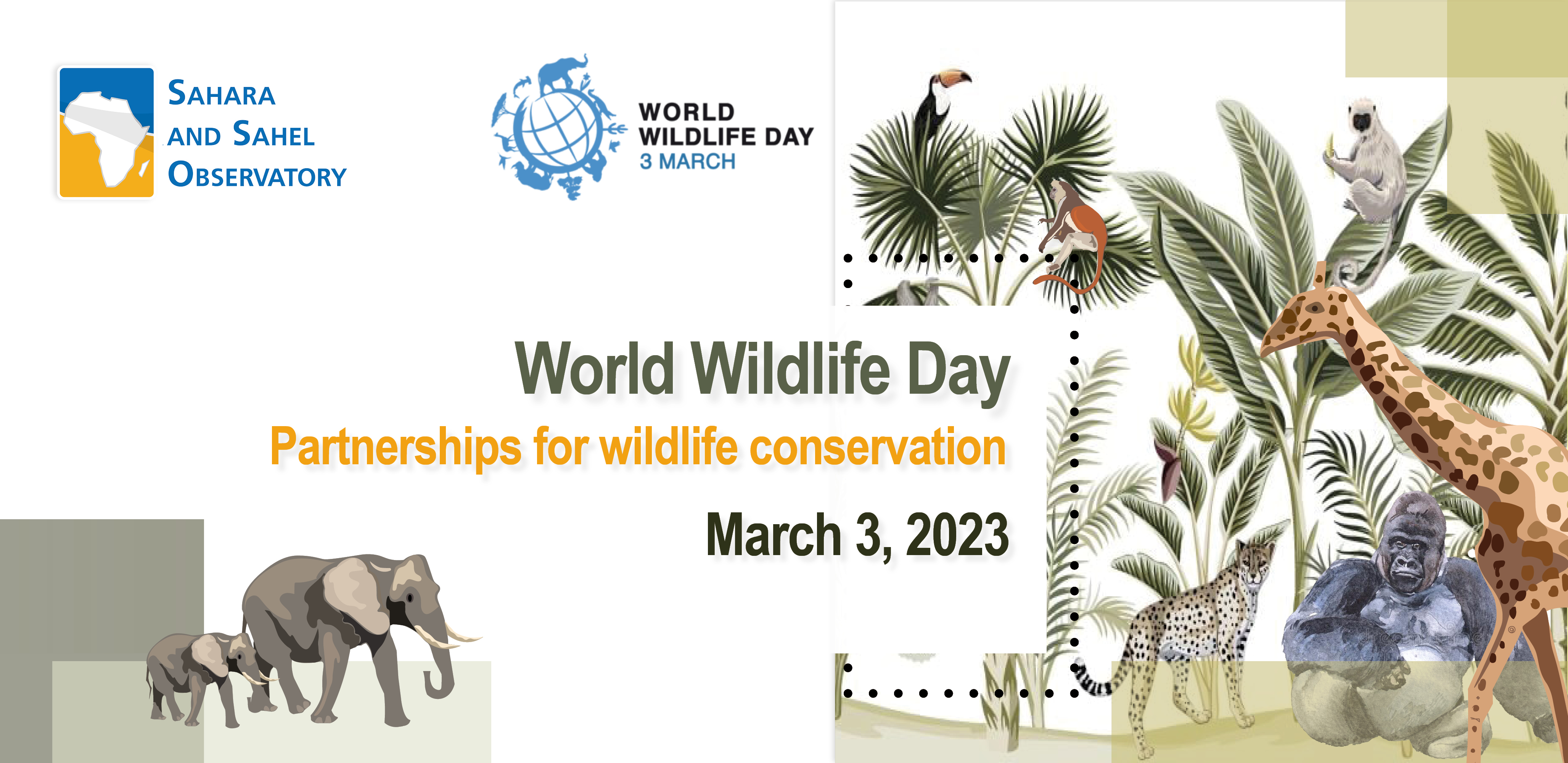I am mother Africa, believed to be the birthplace of humanity and the ultimate home for some of the world’s most iconic wildlife! Lions, giraffes, gorillas … Well, the list goes on.
My wildlife forms a key part of my identity and plays a vital role for my ecological and economic sustainability.
On this World Wildlife Day, I wish, you humans, can acknowledge my true value, spread awareness about my unique wildlife and work together to have it preserved.
Now, let me tell you about myself!
Author
Olfa Sehli
Marine biologist and ecologist

I am mother Africa, believed to be the birthplace of humanity and the ultimate home for some of the world’s most iconic wildlife! Lions, giraffes, gorillas … Well, the list goes on.
My wildlife forms a key part of my identity and plays a vital role for my ecological and economic sustainability.
On this World Wildlife Day, I wish, you humans, can acknowledge my true value, spread awareness about my unique wildlife and work together to have it preserved.
Now, let me tell you about myself!
- The African wildlife is unique!
Africa is marvelously rich with an exceptional wildlife that developed unique strategies to adapt and survive is such a harsh environment.
Africa is also home to quarter of the global biodiversity and a panoply of various ecosystems including mangroves, deserts, tropical forests, savannahs, and even mountain glaciers. This biome diversity gave rise to a great number of endemic species: 4,539 freshwater species (IUCN), 1,400 bird species (Birdlife international), and the famous , etc. The Grauer's gorilla, located in the Kahuzi-Biega National Park (KBNP) in Congo, is one of the most endemic and critically endangered species of the animal kingdom.
- The Global wildlife as a Pillar to humanity
Wildlife is not only admirable for photographs; it is one of the most important pillars to humanity’s survival. According to IPBES’s assessment report on the sustainable use of wild species, 1 in 5 people depend on wildlife for income and food. Besides, it represents an essential part of our ecosystem, stabilizes the environment and keeps soil erosion and degradation drivers under control.
- The African wildlife is the ultimate guardian of local communities
The lives and livelihoods of our African ancestors have always been linked to wildlife that was such a spiritual and cultural inspiration to them. They showed respect to every single animal like the leopard representing greatness, ferocity and courage.
Not only that, wildlife helps combat soil degradation and tackle climate change, and most of all, it is a patron for Africa’s economic growth and sustainability.
Want to know how? Let’s get into details!
Wildlife contributes to land preservation in Africa. Animals reduce soil erosion by keeping the vegetation balance. In fact, primates, elephants and antelopes play an important role in seed dispersal, the maintain of local vegetation, the natural control of pests and the prevention of overgrazing. Thus, their conservation prevents deforestation and soil degradation and keeps a high level of biodiversity.
Wildlife helps tackle climate change. By keeping healthy habitats such as forests, wildlife contributes to vegetation increase and high levels of carbon sequestration. As revealed by “The role of large wild animals in climate change mitigation and adaptation” article that appeared in the “current biology” journal, large animals are a key contributor to climate change mitigation as they change the fire regime and cool the earth’s surface by reflecting more solar radiation.
Wildlife is a patron for Africa’s economic growth. Wildlife provides many opportunities for economic growth in Africa through different sectors such as ecotourism, agriculture, carbon market, non-timber forest products and animal products. According to the “State of the Wildlife Economy in Africa” report, the wildlife safari industry in Africa is estimated at between USD 12.4 billion (direct) and USD 42.9 billion (total). Furthermore, in 2019 travel and tourism in Africa made a 7.1% contribution to Gross Domestic Product (GDP), and created 24.6 million jobs (WTTC, 2020). Nevertheless, maintaining sustainable and inclusive wildlife economies is a key condition to align wildlife conservation with the economic development in Africa and the prosperity of local communities.
- Why is preserving the African wildlife urgent? What needs to be done?
Africa’s rich wildlife lies under significant pressure with the increasing losses of species and habitats. According to the International Union for the Conservation of Nature (IUCN), over 6,400 animals and 3,100 plants in Africa are at risk of extinction. This threat is mainly driven by a combination of human-induced factors such as poaching, illegal trade, the human-wildlife conflict and habitat loss. Those threats exacerbated by climate change impacts such as resource extraction, deforestation and droughts. The two-year drought in Kenya that wiped out 2% of the world’s rarest zebra species (The Grevy Zebra) and increased elephant deaths, is a living proof of the threats on the African wildlife.
“Now that I, mother Africa, told you mostly everything that you might question, let me add one last thing. On this World Wildlife Day under the theme “Partnerships for Wildlife Conservation” and within 8 years left to meet the UN Sustainable Development Goals, I need you to acknowledge that it is more than urgent to reconsider the consequences of your activities and work together towards the restoration of my wildlife, populations and habitats.
To do so, here’s some of the recommendations that will guide you through your journey of wild conservation”:
- Develop more projects to create income opportunities through conservation and work with local communities in order to reduce human-wildlife conflict.
- Enhance close partnerships with protected areas authorities
- Work on the introduction and encouragement of using climate-smart agriculture and sustainable energy alternatives
- Regulate transhumance and livestock around protected areas
- Encourage the use of new technologies to monitor wildlife in protected areas such as the establishment of early warning systems and the deployment of drones and other connected IT systems
- Work on the restoration of degraded national parks such as Garamba National Park (Congo – Kinshasa), Kahuzi-Biéga National Park (Congo) and Manovo-Gounda St Floris National Park (Central African Republic), all designated as World Heritage Sites by UNESCO and assessed as "critical” (IUCN)
Have a deeper look through
The IPBES regional assessment report on biodiversity and ecosystem services for Africa https://zenodo.org/record/3236178
Assessment report on the sustainable use of wild species https://ipbes.net/sustainable-use-assessment
https://www.ox.ac.uk/news/2022-03-03-large-mammals-can-help-climate-change-mitigation-and-adaptation#:~:text=The%20researchers%20highlighted%20three%20key,the%20sun)%20and%20fire%20regimes.
https://portals.iucn.org/library/sites/library/files/documents/SSC-OP-054-Fr.pdf
https://www.birdlife.org/wp-content/uploads/2021/03/soab_2017-english_final.pdf
https://portals.iucn.org/library/efiles/documents/rl-6-001.pdf
https://www.cbd.int/gbo/gbo4/outlook-africa-en.pdf
https://www.iucn.org/content/west-and-central-africas-wildlife-trouble-shows-new-iucn-report
https://africacenter.org/wp-content/uploads/2023/02/Biodiversity-Threatens-Human-Security.pdf
Snyman, S., Sumba, D., Vorhies, F., Gitari, E., Enders, C., Ahenkan, A., Pambo, A.F.K., & Bengone, N. (2021). State of the Wildlife Economy in Africa. African Leadership University, School of Wildlife Conservation, Kigali, Rwanda.
Author
Olfa Sehli
Marine biologist and ecologist
